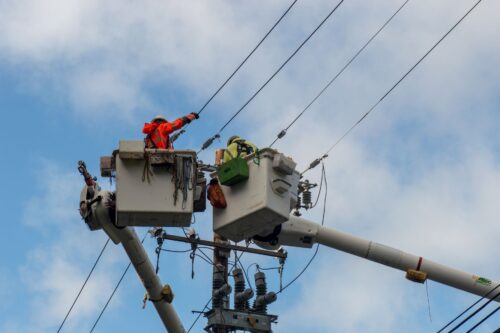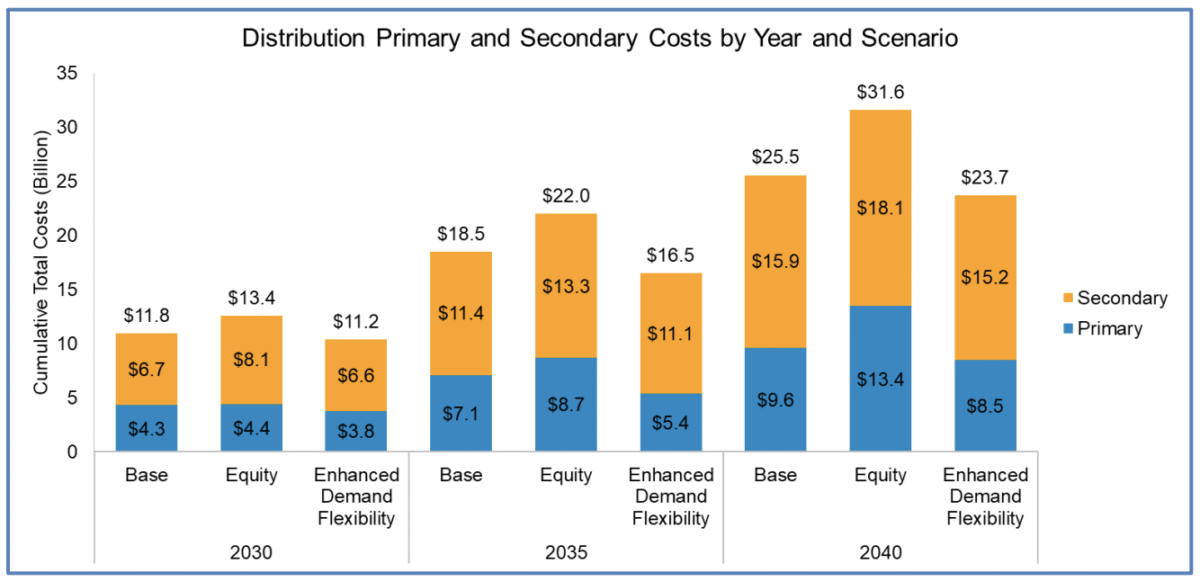
Pacific Gas and Electric Company (PG&E) recently filed its draft Electrification Impact Study (EIS) Part 2 with the California Public Utilities Commission (CPUC), marking an important step in California’s broader effort to prepare the grid to support its electrification goals. The study looks to 2040 and asks what it will take to implement millions more electric vehicles, heat pumps, and other technologies that will reshape how neighborhoods, cities, and regions are powered. E3 and Integral Analytics supported PG&E through analytical design and modeling for the study, developing the geospatial and distribution system models that link electrification growth to infrastructure needs and costs. Working closely with PG&E’s engineering and planning teams, the project connected statewide policy goals to detailed, utility-level analysis to show how proactive planning can make electrification more efficient and affordable.
The study is part of a larger series that began with a statewide analysis. In this phase, Part 2, each of the state’s investor-owned utilities conducted its own analysis using the same broad framework but with its own service area data and planning methods. The goal was to estimate costs and show how these insights can inform real distribution planning. Working with PG&E, E3 and Integral Analytics applied their modeling framework that links customer adoption of electrification technologies to detailed grid impacts. E3’s Forecasting Anywhere platform, developed jointly with Integral Analytics, provided high-resolution geospatial datasets showing where electric vehicles, heat pumps, and other distributed technologies are most likely to grow. These datasets were integrated into Integral Analytics’ LoadSEER distribution planning software, which calculated geospatial load forecasts and infrastructure needs. These tools provide a clear view of how electrification growth will manifest on the grid, and how strategies like demand flexibility and equity-focused investment can shape those outcomes.
The two major findings: electrification will require significant new investment, and, if managed well, it can actually make the grid more affordable to operate. PG&E modeled three scenarios to capture different futures. The Base Scenario used current planning practices and customer behaviors. The Equity Scenario expanded electrification in disadvantaged, low-income, and Tribal communities to match their share of the population, resulting in higher overall adoption of DER and electrification technologies. The Enhanced Demand Flexibility Scenario added load management that shifts or reduces peaks at times and places that matter most for the grid. Across these cases, total distribution system investment needs through 2040 ranged from $23B-$31B. Compared to the Base Scenario, the Enhanced Demand Flexibility Scenario achieved an estimated savings of about $1.8 billion, showing how well-targeted flexibility can meaningfully reduce grid costs.

Widespread electrification spreads fixed costs over more kilowatt hours (kWh). In other words, once the initial upgrades are made, a more fully electrified customer base helps distribute the costs more broadly. According to PG&E’s analysis, this added load could create downward pressure on rates by 2040. It points to a broader shift in how electrification is understood, from a short-term cost to a long-term investment in a more efficient system.
PG&E’s approach to scenario modeling also marks a shift in how utilities plan for the future. Instead of testing unmitigated stress cases, the company modeled “mitigated” scenarios that reflect realistic operational decisions, such as moving load between substations, upgrading transformers when capacity limits are reached, and integrating demand response and flexible rates. The study also introduced a more detailed look at the secondary system (the service transformers and lines that connect homes and businesses to the grid), which has historically received less attention in long-term planning. PG&E analyzed transformer-level data to project where upgrades and new installations may be needed, better linking high-level forecasts to the local infrastructure that will make electrification possible.
California’s clean-energy goals depend on electrification at scale, and studies like this one begin to show how that transition can happen within the existing grid. They also point to the importance of coordination between flexible loads and grid conditions, state equity goals and local investment decisions, and utility planning and customer behavior. The study provides a practical map of how the grid can evolve to support an all-electric future while keeping the system reliable, equitable, and ultimately more affordable.
This analysis was conducted by Caitlin McMahon, Christa Heavey, and Lindsay Bertrand. To learn more about E3’s work on grid and distribution planning, please contact eric@ethree.com.


